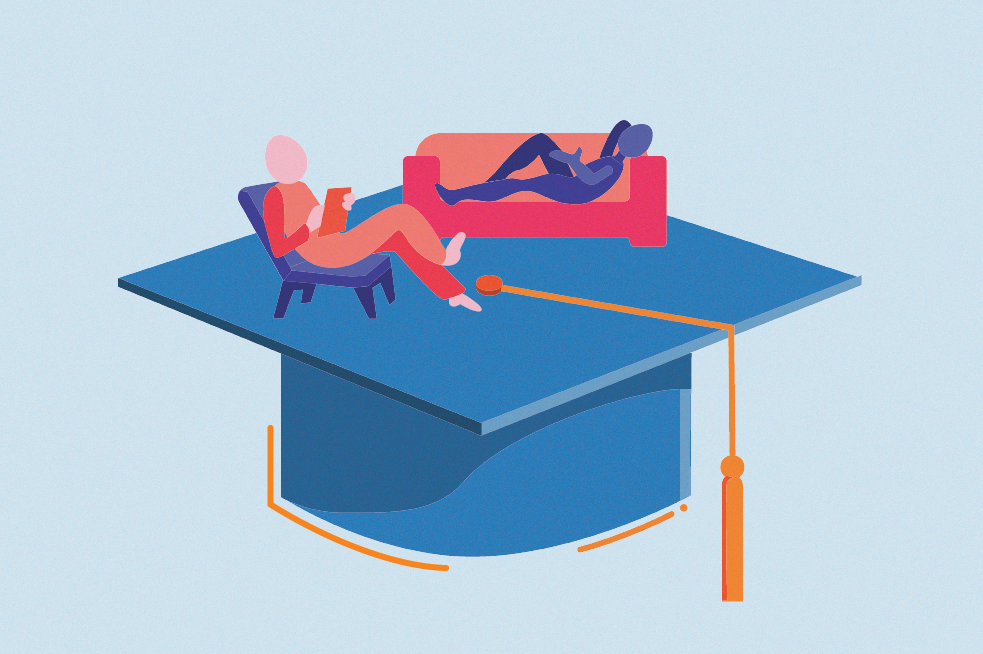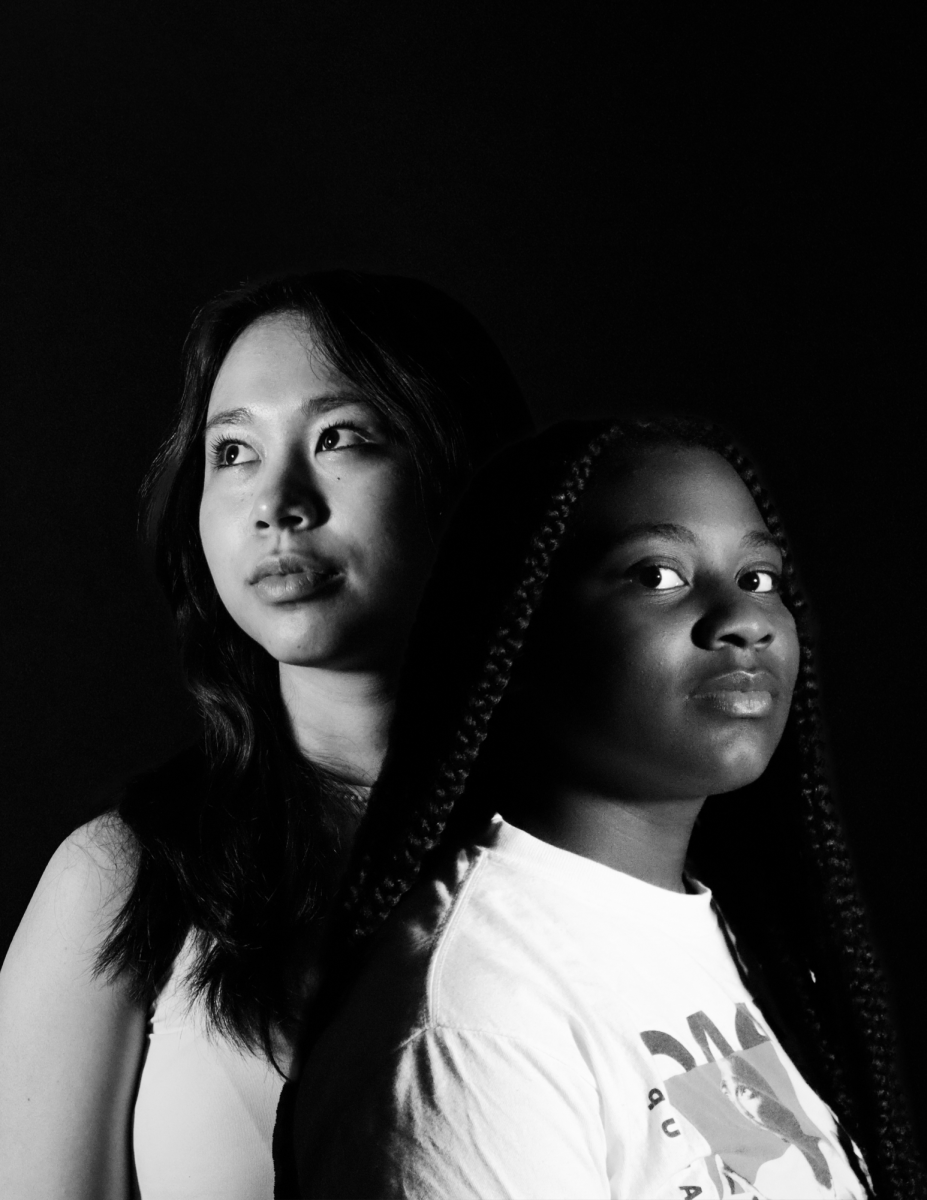Look around the lunchroom of Wydown Middle School, and you’ll witness a sight quite normal for Clayton students, and a testament to the diverse population treasured by the district. They are what Wydown principal Mary Ann Goldberg refers to affectionately as “U.N. tablesâ€, or gatherings of children of all different nationalities.
In 2013, a valued source of diversity, the Voluntary Student Transfer program, will finish the five-year extension it was granted in 2008. Discussions, according to Chief Communications Officer Chris Tennill, will begin next year.
In 1999, the Voluntary Student Transfer program became what it is today; that is, voluntary.
At that time, Clayton opted to keep the program, and when the program came up for renewal in the 2008-2009 school year, the district decided to extend it for another five years. In 2013, that half-decade extension of the Voluntary Student Program , and the debate will be on.
And so in 2011, we begin exploring the VST program—and more importantly, aim to uncover what’s buried beneath the myths and misconceptions that plague the program today.
To do so, it is important to understand that the VST program has a multitude of facets that must be looked at relative to one another in order to understand the whole. The VST has an obvious financial side, to be sure, but a good number of Clayton district members place great esteem on the diversity and opportunities that the program brings.
“It’s about a holistic viewpoint,†superintendant Mary Herrmann said.
The VST program pulls students from the St. Louis City area; Clayton receives students from North St. Louis and the Central West End, mainly at the kindergarten level.
However, the complexity of the program means that many aspects must be studied and explored to get a clear picture. Looking at just the financial or social aspects leads to an unbalanced view, Herrmann said.
On one hand, the program is based upon per-pupil reimbursement given to schools participating in the program. Over the years, as the VST program was given less money to work with, the reimbursement that Clayton received fell as well, leaving many citizens wondering if keeping the program is worth it.
At the same time, the counterpoint frequently made concerns the much-valued diversity that the program injects into the Clayton community.
Of course, even with the racial and cultural awareness that Clayton strives for, the program suffers stereotypes. Those pre-conceived notions could be detrimental to how citizens view the program.
A balance between the two main points—the money and the diversity—must be struck in order for viewpoints to be properly evenhanded.
However, this is hard with the number of misconceptions surrounding VST.
Population talk
Typically, according to CHS principal Louise Losos, the VST program brings from 40-45 kids per grade level to the high school, and about 38-48 per grade level to the middle school.
District data shows that this past year, the number of incoming VST kindergarteners was halved.
“And not just kindergarteners,†Losos said, “but anywhere we take new students. We take them in kindergarten, we take them in sixth grade. We don’t take them in between.â€
And according to Losos, this is the second school year that CHS has not received any new VST students. Behind the falling numbers, there is a simple explanation. Enrollment among the Clayton residential population is rising, leaving less room for extra students.
Tennill observes that the resident population rise usually follows the economy, and that “in times of recession, fewer families have the disposable income to send their children to private schools.â€
He added that Clayton has kept its tuition lower than those of MICDS, John Buroughs, and the other private schools around St. Louis. Even so, the district has been forced to raise its tuition rates. Other districts are in similar situations, he said.
And logically, as resident populations rise, the number of seats available for transfer students shrinks. Thus, the seemingly drastic reduction of VST students simply follows the trend of rising resident attendance.
“Our number of VST kindergarteners went down,†Glenridge Elementary principal Beth Scott said. “But our kindergarten classes actually got larger.†The slightly reduced numbers are also a reaction to an enrollment spike the previous (2009-2010) school year, according to Board of Education President Sonny Buttar.
“Over 30 percent of that enrollment happened in August [of that year],†Buttar said. “The district was caught off guard.â€
The large resident population, combined with the influx of VST children, made for a 2009-2010 kindergarten class that was, she said, simply enormous.
The district learned its lesson and cut down the next year’s incoming class in the only way it could: by cutting voluntary transfer students down.
Though the district, being public, has no control over the number of resident students that enroll, it could cut down in another way.
“The only population the district can directly control is the VST population,†Buttar said.
Follow the money
The financial aspect of the VST program is indeed the most prominent, and the one of the more frequented arguments against the continuation of the program. It is the common misconception that the VST program loses the district money.
“We actually wouldn’t be able to afford the class sizes we have if not for the VST program,†Chief Financial Officer Mark Stockwell said.
VST reimbursement per child dips and rises according to the economy and the money in the VST program. This can be a problem—the figure fell low in the 2002-2003 school year, cut by at least 50 percent, according to Buttar.
However, Stockwell says that it will likely not fall below $7000. Additionally, the calculated incremental costs per student are estimated to be about $5400 to $6000, letting the reimbursement cover the costs.
Stockwell notes that many against the VST program assume that it sucks money away from the district, when in reality it is not so.
“If you believe we’re losing money,†Stockwell said, “Then you don’t understand the program. It’s a common misconception.â€
Years ago, participating districts were given reimbursement based on their individual cost per student, which for Clayton has always been higher than average. It stands currently about $17000-$18000 for a Clayton student, according to Stockwell. When there was “plenty of money†in the program, Clayton received a much higher reimbursement based upon that cost per pupil.
“The district made money for years,†Buttar said.
The extra money was put to use in student programs. Buttar attributes the district’s historical sense of plentitude and renowned curriculum partially to the extra money that the VST program then brought in.
“The intent was that local taxpayers wouldn’t be footing the bill for non-resident students,†Stockwell said. “But when money became tight, the methods that were used to lower the cost of the program, which only had so much money available, basically started taking the money down from the most expensive districts.â€
Clayton, along with several districts in the same situation, has received reimbursement since then closer to the average. This year, that seems to be about $7500, but Stockwell points out once again that $7000 is the probable “floor†in terms of reimbursement.
Both Stockwell and Buttar noted that many inquire how the district can afford to accept reimbursement among the likes of $7500, to which they point to the difference between incremental cost and the overall cost per student. According to the incremental cost per student of about $6000, the VST reimbursement would cover that expenditure with some to spare.
Both also used the analogy of an airplane to explain this: it may cost so much money to fly a plane, no matter how many people are aboard. In other words, most of the costs of running a school goes to what Stockwell refers to as “fixed costsâ€â€”teacher salaries, heating and energy, food, and other such things.
“If you’ve got empty seats, it still costs the same to fly the plane,†Stockwell said. “From a purely financial perspective, the school district has been much better off than it would have been outside the program.â€
Buttar agrees.
“You might as well fill all the seats,†she said.
Here to stay
However, another aspect of the program that many deem important is the fact that it brings a more diverse population to Clayton and adds depth to the Clayton student community.
“Some cons of ending the program would obviously be less diversity within the Clayton schools,†junior Karley Woods, who has been a VST student since kindergarten, said. “I think its diversity is something the district takes pride in, and also something the district should continue to value. It brings people from different backgrounds, as opposed to everyone being from the ‘Clayton bubble.’â€
When asked their favorite aspect of the program, this community aspect was a frequent answer. Of this mindset is Glenridge Elementary librarian Jude Hagene.
“Whenever we have the chance to meet people we wouldn’t normally meet, we should take it,†Hagene said. “I think a lot of people think that we’re just a rich suburban district doing everybody a favor—that’s not the way it is.â€
Hagene is not alone in her view that the diversity that the VST program brings to Clayton is an essential benefit that it provides.
“That’s why I love public education,†Scott said. “We take in all students, and we help them learn and grow. It does not matter where a child lives once he or she is enrolled.â€
Once a student is accepted into the Clayton community, they become “ours,†according to Buttar, Scott, and Herrmann. All three stressed the fact that the aim of the program is not to create two groups of students, the transfers and the residents. To them, there is no difference.
“Once they enter, they’re our kids,†Buttar said.
Besides the general sense of community, the sense of diversity that the program brings is another perk that many view as essential. Some said that they would choose to keep the program on the basis of helping create a more heterogeneous population.
“Even if it would cost us, I still think we should do it,†Hagene said. “It would be odd if we didn’t have it.â€
Herrmann agrees.
“The participation [in the VST program] isn’t about the dollars,†Herrmann said. “It’s about building community. It enriches the community in a whole variety of ways.â€
Losos notes that because of Clayton’s proximity to St. Louis City, it is much easier for VST students to really feel like a part of Clayton’s community. The community experience is something the she feels is of high value.
“You can’t put a dollar value on diversity,†Losos said.
A diverse population of students is important to many who believe that gives children a more of a real-world experience.
And when said children are young and impressionable, growing up with a diverse class helps them learn early on about, and to appreciate, different cultures and nationalities.
“Yes, we would love diversity,†Buttar said. “It adds a richness of experience.â€
Tennill adds that such an experience is not just for the benefit of the students now, but for their future as well.
He would prefer to allow students to learn and grow in an environment that “mirrors our world†and provides a strong foundation that Clayton students can take through life wherever they go.
And in this day and age, wherever one can go is likely anywhere. T
herefore, such a diverse community is even more of a benefit for a life in a world that is, as Tennill puts it, “going global.â€
“It’s about global competency and competitiveness,†Tennill said. “And if our students are going to have to compete in that type of world, it’s not a homogenous arena.â€
Scott agrees.
“This way, students will get a real view of the community that we live in,†Scott said.
Tough stuff
The effect that transfer students have on the quality and reputation of Clayton’s schools has long been a much-discussed topic among parents, teachers, and administrators. For this reason, any future decision concerning the program will be, as Buttar calls it, “emotionally heavy.â€
“It [the VST program] does come at a cost,†Buttar said. “That’s that part you don’t talk about much, because it feels loaded. There is a sensitivity to comments and perspectives being painted as potentially racially callous, and the discussion becomes an emotional nightmare.â€
Buttar ran for the Board of Education after seeing it struggle with the issue of the VST program years back.
Since then she reports having been at incredibly difficult and emotional meetings in which the program was the main concern, referring to some aspects of the program, especially those of stereotypes, as “the elephant in the room.â€
Buttar senses that stereotypes still plague the program and its reception. If parents are unhappy with the education or attention their child is getting in the classroom, she feels that it can become manifested by dissatisfaction relating to the behavior of a transfer child in the class or about participation in the VST program generally.
For instance, Buttar reports that one particularly exasperating argument against the program is that of behavioral problems by VST children.
“We do have some problems with behavior in the elementary schools, and theft and vandalism in the secondary schools,†Buttar said. “And I hate when it’s a VST kid that has the problem. It just gives ammunition to them [those who oppose the program]. The argument invariably becomes about sending the kids back.â€
Scott has been in similar situations.
“I’ve caught it in a conversation one or two times,†Scott said. “A parent seemed to be inferring in their thoughts, ‘Can’t we send them back?’ because ‘he’s not one of ours.’ Well, yes, he is one of ours. This is something we’re committed to. And anyway, when someone misbehaves, we don’t typically kick kids out of elementary school, either.â€
Scott feels that in her behavioral records, there is a fair balance between VST and residential students’ infractions. She also chalks it up to culture—that some cultures deal with frustration in a more outward manner than others.
And the debate doesn’t stop at behavior. The VST program began as a mandatory desegregation program decades ago, and though the district kept with it when it became voluntary, Buttar feels that there are still problems along that vein—problems that simply contribute to her feeling of an emotionally-draining situation when it comes to the VST program.
“I don’t think that all teachers hold the black students to the same standards as they do the white children,†Buttar said.
Hagene agrees.
“I’ve had instances where a third party is mediating a dispute between a student who is in the VST program and a resident child,†Hagene said. “Sometimes the third party seems inclined to side with the resident child before they know all the facts. In one case, it turned out that the sweet, tiny resident girl was to blame for all the trouble, not the ‘big for his age’ VST kid.â€
The opinions and assumptions surrounding VST kids make for another twist in the discussion to come.
“Buildings, Prop S, Wydown—those were nothing compared to the emotionality of the VST issue,†Buttar said.
And in conclusion…
According to Tennill, discussions surrounding the upcoming decision in 2013 will begin next year. But as one can see, there will be a considerable amount of history and past experiences involved in the debate.
And to most, the VST program has been, and continues to be, an essential part of the Clayton experience.
“I did a lot of research about the district before I came here,†Herrmann said. “One of the things that really impressed me was the participation in the VST program…that it was so important to the community.â€
Tennill agrees.
“Different cultures, different learning styles, it’s all there,†Tennill said.
By balancing the financial and community aspects, many see the VST program as largely beneficial to the district. It gives the opportunity to meet new people, learn about different cultures and interact with different kinds of people, and in addition provides the district with compensation for it all.
“They think it’s about money, but it’s about diversity,†Hagene said. “It’s about mixing it up.â€






